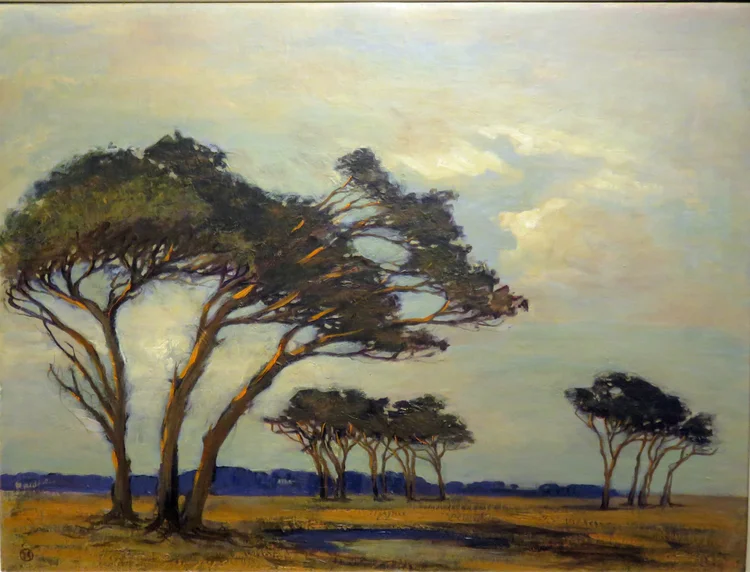This gentle depiction of Muizenberg Beach must have been painted by Nita Spilhaus shortly after she arrived at the Cape towards the end of 1907. The signature alone on this painting (lower right) helps to date it: Nita only signed her oil paintings with her carefully scripted full name in capitals in the very first few years after arriving at the Cape. By around 1910 she customarily signed oil paintings with her initials NS, and by 1917, and thereafter throughout the rest of her painting life, she employed a monogram (an entwined N and S in a circle, with the S simply forming the second upright of the N, which was gently curved in the shape of an S).
But what else can we glean from this painting? Paintings of landscapes and buildings often contain glimpses of history and bygone scenes, and this is one such painting of a well-known Cape coastal scene.
Her is a photo taken of approximately the same scene today:
Photograph: Peter Slingsby
Nita was sitting at the corner of Atlantic and Royal Roads, with the drift / bridge over the Zandvlei mouth behind her. It is not possible to take a photo of this view any more, because the large block of flats and high wall on the right obscures the whole view of the Kalk Bay mountains, while the promenade and ‘new’ pavilion completely hide the sea. So the picture was taken from the promenade, precisely in line with Nita’s view, but much closer to, and higher than, the beach, so that our perspective of the bay and the beach is unfortunately much deeper. The bathing boxes were there from about 1896 but the ones pictured in Nita's painting were destroyed in a storm in the 1980s and have not been replaced.
The photograph below is a 180 degree turn to the view in the opposite direction [roughly north east] showing where Nita sat and the relationship of the Zandvlei estuary outflow and Vergenoeg to that position:
Photograph and topographical detail: Peter Slingsby
The best clues to dating Nita's painting may be the faintly-depicted buildings on the hillside at the end of the beach. At the point where the dark hill slope meets the line of bathing boxes there is a splodge of red and a hint of a lighter colour. This is precisely where Abe Bailey’s big house, built in 1903, is situated. It is also visible in the first picture but appears higher up the slope, because we have a different perspective on the view. Also visible in Nita’s painting is a vertical light-coloured splodge, to the right of Abe’s house and a bit higher up the slope. This is Summer Place, built in 1902. Many of her other faintly-depicted buildings match the positions of surviving buildings, most of them older than 1902. So we know the work must have been painted after 1903 but before 1910, but we also know that Nita was still living and painting in Germany until end 1907. It is likely the painting was done in about October or November; there is no sign of anyone on the beach and the grass on the sand is clearly blowing in the spring south easter, as is the lady’s white apron. So we can presume that the painting was done in October/November of any of the years 1908 to 1910.
All photos and topographical detail, and descriptions of the physical features of the area, are courtesy of Peter Slingsby of Slingsby Maps. See his website:
http://www.slingsbymaps.com/




